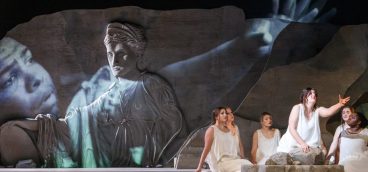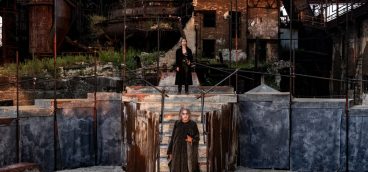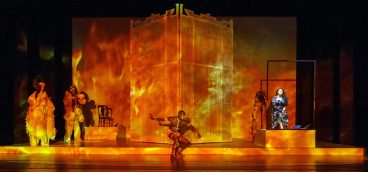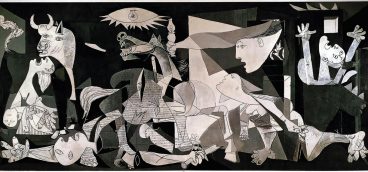Barebones Delivers a Visceral Portrayal of Working America in “Skeleton Crew”
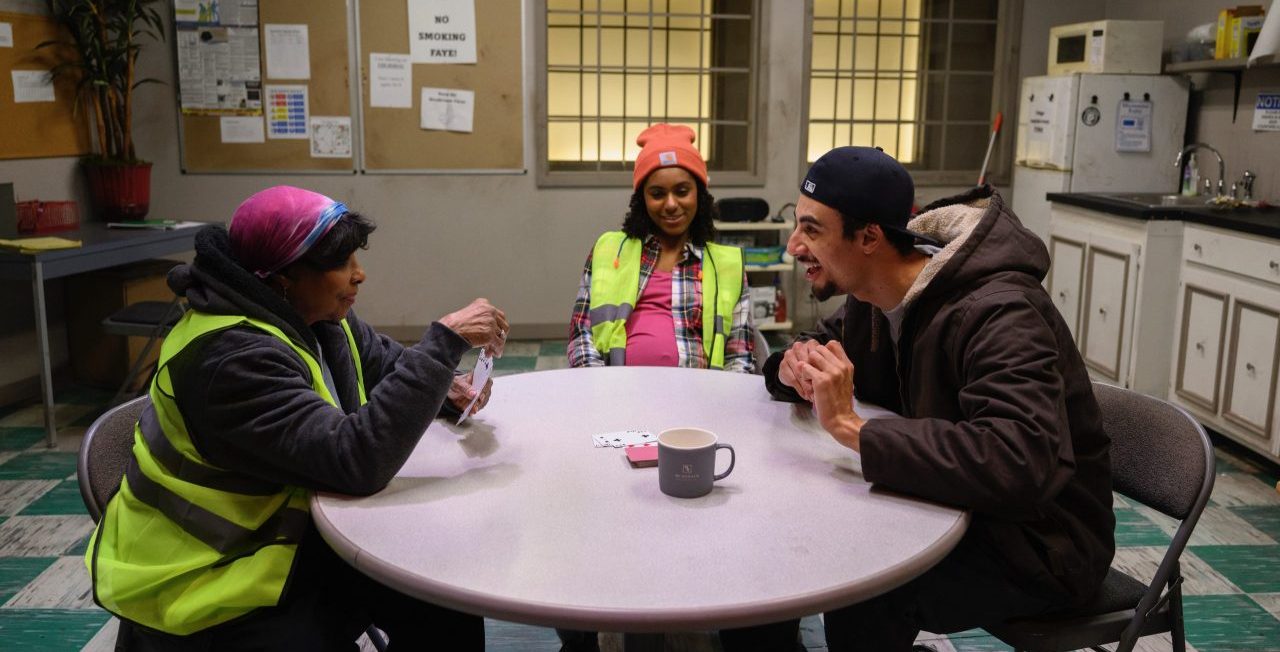
Usually, critics try to bury the lead, but I’m going to say outright that Barebones Productions may be the most authentic theater company in America today. This is not to denigrate any other company, nor to say that Barebones is the best theater company, but what they have done over the past couple of years — with such a strong procession of playwrights, directors, actors and crew — is singular and is growing more transformative by the show. And they’re keeping it real. This is the only theater in America — I would bet — built across the street from a working steel mill; the only theater in America where the scent of sulfur dioxide in the lobby is a feature and not a bug. Brecht, in all of his proletarian glory, could only dream of having a company like this.
The current production, “Skeleton Crew” (2016) by Dominique Morisseau, feels as if it picked up where the last one, “American Buffalo” left off. It’s as if the former cast exited the stage, a few set changes were made, but the rarefied intensity and emotion achieved in that drama was kept alive somehow, like the coals in an old stove sustaining its fire overnight.
The action, like “American Buffalo,” transpires in one place — in this case the break room of a Ford auto plant in 2008 Detroit. The central piece of furniture is also a card table with four chairs and a deck of cards — perhaps the ultimate American motif for souls who need to pass the time while they think about what they’d rather be doing with their lives.
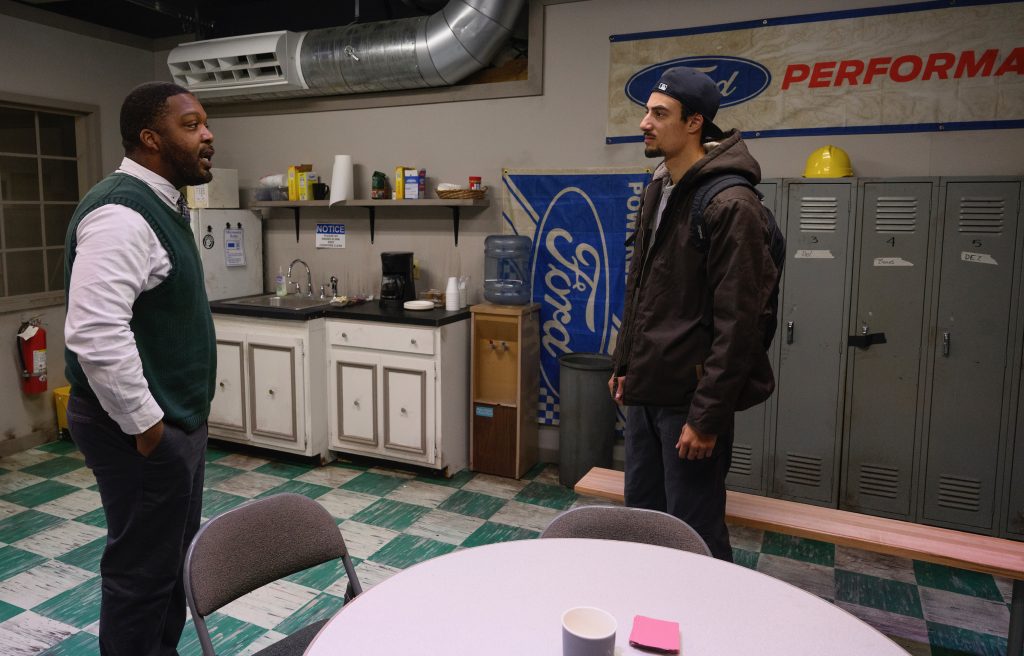
Director Tomé Cousin makes this all come alive through the enlightened triangulation of space, text, and players. The performance appears to issue from a troupe that has been working together for years, not months. His stage blocking is so organic and tight I wish the Pittsburgh Steelers would hire him as offensive line coach. You can always tell when actors trust a director — they tend to take chances by living within their subjects, instead of trying to act outside of them.
The four main characters, who are black, revolve around Faye (Etta Cox), a 29-year veteran of the plant and the local UAW union rep, who is also the spiritual mother of the younger employees. The break room is her domain, in more ways than are readily apparent. Cox plays Faye with a soft but vigorous authority; when she speaks the others listen, and her choice to amplify her presence with quietude actually enlarges the space of the black box set, augmenting not only the theater’s interiority, but each of the performers’. It’s as if you’re not hearing Faye speak, you’re hearing her think.
Playwright Morisseau gives her creations the kind of speech that is more of a tableaux than a mere progression of words. Her dialogue undulates from the mundane and colloquial to the ethereal and lyric, for example, in this speech of Faye’s to the young worker Dez (Brenden Peifer): “I know everything about this place, Dez. The walls talk to me. The dust on the floors write me messages. I’m in the vents. I’m in the bulletin boards. I’m in the chipped paint. Ain’t nobody can slip through the cracks past me up in here.”
Dez, like all the characters, evolves tremendously over the arc of the play, and this degree of transformation puts considerable demands on the cast, who never let themselves fall into one-dimensional clichés. Peifer — a young actor with extensive range — is up to the task and does not carry a “style” from one performance to the next. He’s a walking embodiment of sui generis — any role he plays he becomes.
Dez’s love interest is Shanita (Saige Smith), a pregnant, young worker who may have the most idyllic view of being a laborer since Walt Whitman wrote “The Song of Occupations” 150 years earlier in Leaves of Grass. She declares, “My touch . . . my care . . . it matter. I’m building something that you can see come to life at the end. Got a motor in it and it’s gonna take somebody somewhere. Gonna maybe drive some important businessman to work. Gonna get some single mama to her son’s football practice.”
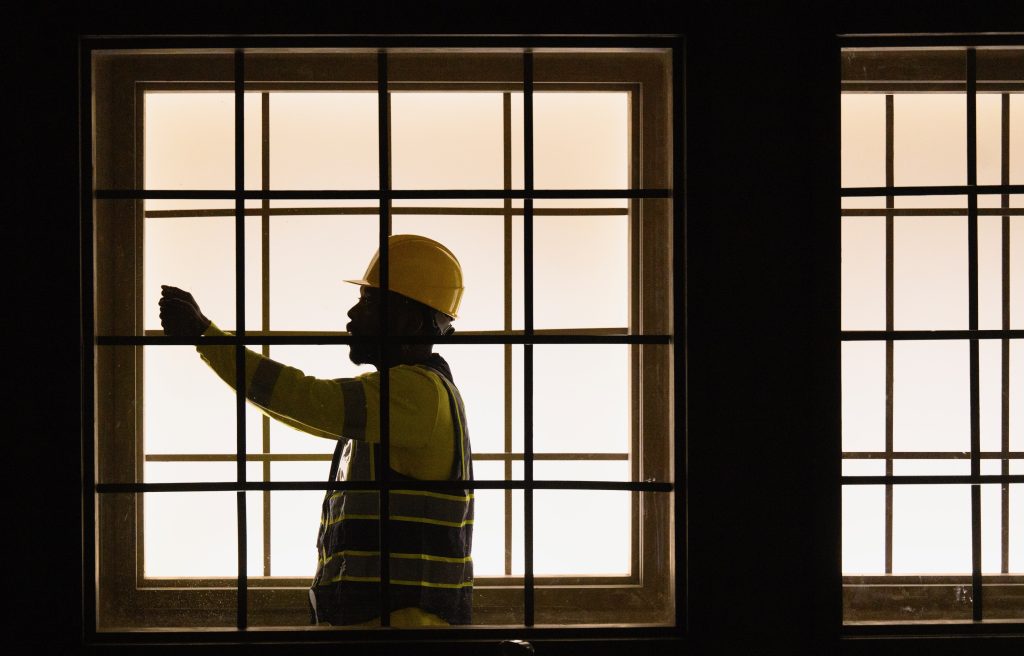
Playing the heavy role and counterbalancing the perspective of the line workers is the foreman Reggie (Richard McBride), who represents management, and knows of the impending shutdown of the factory. The question of whether Reggie is friend or foe to the others is the most compelling one the play asks, and it’s crucial that McBride keeps them — and us — guessing. Otherwise, this would be just another “labor vs. management” melodrama, and we all know how those end. In fact, the night before I saw “Skeleton Crew” I happened to watch the brilliant 1976 documentary “Harlan County U.S.A.” about the Kentucky coal miners strike, and it certainly set me up to expect a different ending. McBride’s Reggie has that Brando-like quality of not projecting his intentions; his acting lives in the moment, and no one moment can be predicted from the last.
The fifth onstage entity, labeled “Performer” in the program (Mario Quinn Lyles), has no speaking part, but dances between scenes like a kind of cosmic stitching mechanism. Dressed in safety garb and helmet, he is the metaphoric embodiment of the factory, moving like a machine, and anthropomorphizing the physicality of the production line. He grooves — sometimes comically, sometimes with pathos — to original music and sound designs by J. Keys and Robert Kaplowitz.
The best technical crews are unobtrusive, as Barebones’ designers certainly are. Andrew David Ostrowski’s lighting has the acerbic florescence you would imagine finding in an auto factory. And he then infuses the atmosphere with red at a key moment of revelation, when we are entering a new realm, perhaps one more infernal than heavenly.
Set designer Tony Ferrieri continues to melt the black walls of this small, square theater, imbuing it with such a sense of infinity that we actually imagine we are looking at part of a gigantic factory, down to the stained floor, tired grey lockers that have seen too many shifts, and yes, even a working punch-in time clock that the workers use to validate their existence. The Heavy Metal magazines on the end table by the crappy sofa is a consummate touch.
As I don’t know exactly where their respective areas of responsibility begin and end, I want to collectively recognize the excellent work of sound technician Andrew Michael, technical director Eric Papineau, and special effects guru Steve Tolin. Claire Durr managed the stage, and Rikkee Lee Rose designed the effective props. Artistic director Patrick Jordan designed the costumes, which are almost too elegant — they could have come from a Carhartt fashion show. One might ask how these working togs and boots — with no dust, grime or wear-holes — could look sparkling new on folks who would have been wearing them for years?
The only aspect of this play that doesn’t mesh is the ending, as the denouement results from the mind of the playwright, not the machinations of the characters. I won’t give anything away, but the resolution feels forced — and sentimental — as if the author wanted her characters to end up in a specific, didactic state, rather than in a destiny of their own volition. The 19th century philosopher Hegel, commenting on this tendency, famously remarked of Shakespeare that his characters appear to be “free artists of their own selves.” This is how they achieve their humanness, by breaking away from the constraints of their creator, and becoming the agents of their own intent.
That aside, this production is a powerful artistic accomplishment, and makes for a fulfilling and remarkably authentic theatrical experience.
SKELETON CREW continues through March 10th at the Barebones Black Box Theater, 1211 Braddock Ave., Braddock. $40-50. www.barebonesproductions.com


